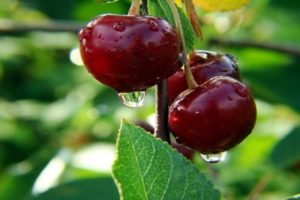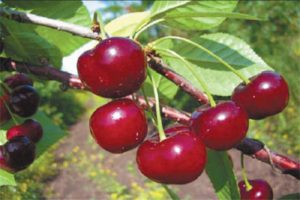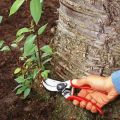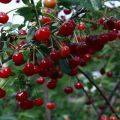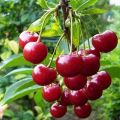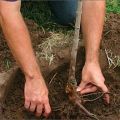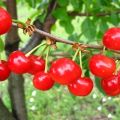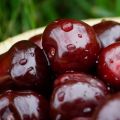Description of the Ashinskaya cherry variety and characteristics of fruiting, planting and care
A hybrid of garden cherry and Ashinskaya shrub cherry is the best variety in taste and aroma. Has an amazing indicator of vitality. Always bears fruit well. The crop is suitable for canning and is very tasty fresh. Due to its varietal characteristics, it is popular with gardeners. Before planting, it is necessary to study the description of the Ashinskaya cherry variety.
Breeding history
A spontaneous hybrid was created by crossing steppe and garden cherries. The name was given in honor of the regional center in the Chelyabinsk region called Asha. In 2002, the variety was added to the State Register of the Ural Region.
Description of the variety
Thanks to its wild relative, the Ashinsky hybrid inherited frost resistance and endurance, which makes it possible to grow the variety in any part of the country.
Description of the variety:
- the plant is slender, fast-growing;
- the length of the shoots is 30-45 centimeters;
- maximum height 2.5 meters;
- bears fruit for 30 years;
- oval shoots, without fluff;
- in inflorescences 5 flowers;
- lentils are medium in size;
- the kidney is smooth, long, slightly curved;
- flowers grow small and white;
- the pedicel length is 25 millimeters;
- flowers do not tolerate frost, die at -2 ° C.

The pyramidal cherry has a dense crown with dark, green leaves.
Characteristics of the tree and fruit
The plant is a fruitful and winter-hardy variety that ripens late. Average life expectancy is 35 years. Used for private gardening and on an industrial scale.
Drought resistance and frost resistance
Main characteristics:
- tolerates drought well;
- withstands frosts down to -42 ° С;
- flowers do not tolerate frost well.
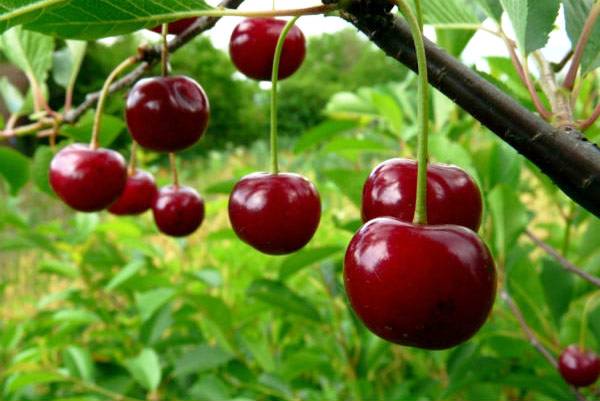
In case of frost damage, the plant quickly recovers without losing its yield.
Pollination, flowering period and ripening times
The variety is partially self-fertile. The crop ripens almost simultaneously in the first decade of August. If there are no pollinators nearby, only 35% of the ovaries are fertilized on average. To increase yields, it is recommended to plant any stone fruit crop with the same flowering period nearby. Flowers appear at the end of May. Stretched flowering.
Productivity, fruiting
From the fourth year, the plant begins to bear fruit regularly, this continues until at least 30 years of age.The fruits ripen together. An adult tree produces about 10 kilograms of juicy berries.
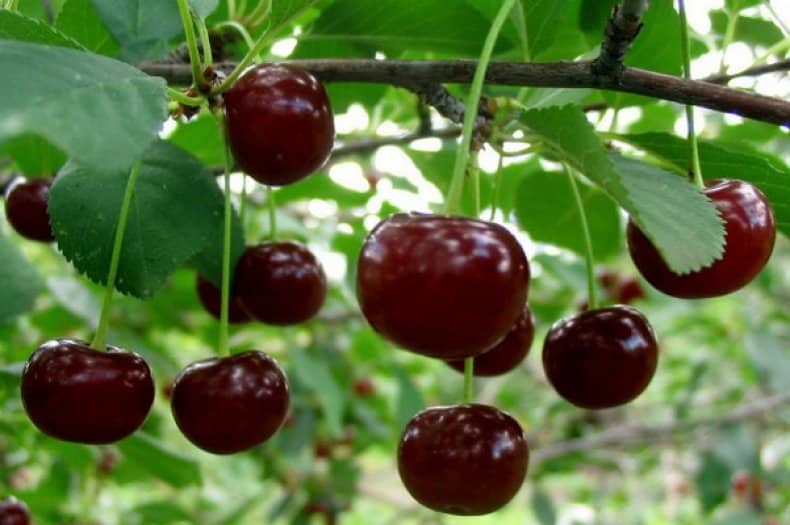
Disease and pest resistance
The variety has increased resistance to coccomycosis. It is not attacked by pests.
Advantages and disadvantages
The disadvantages include:
- poor transportability;
- late ripening;
- simultaneous maturation.
Advantages:
- resistance to pests and diseases;
- long fruiting;
- abundant productivity;
- drought tolerance;
- high taste;
- large fruits;
- the plant reproduces in any way.
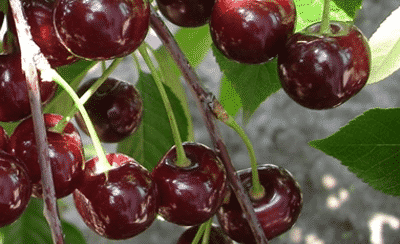
With heavy precipitation, the berries crack.
Landing features
It grows into a tall and beautiful tree. Before planting, you need to study the features of the plant.
Timing
The ideal time is spring, when the snow has completely melted and the buds have not yet blossomed. This happens around the beginning of April. At a later date, the seedlings take root worse. The plant is not planted in autumn.
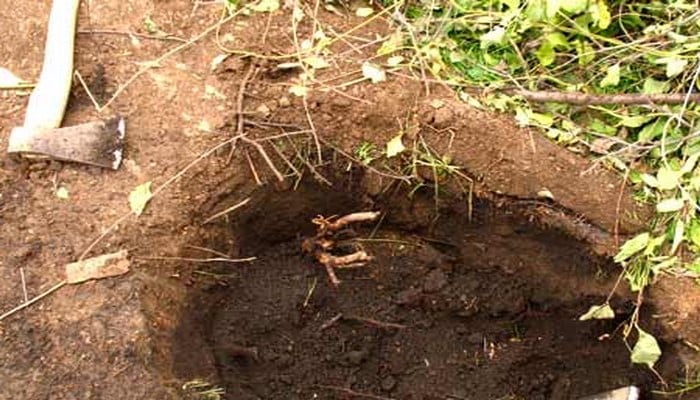
Choosing the right place
An adult tree cannot be transplanted to a new location. Since the variety does not tolerate transplanting, there is a high probability that it will die. The plant does not like cold winds, so it is recommended to plant from the south side of the house or fence.
Prefers light soil with neutral acidity.
What can you sit next to
Not all cultures live well together. Ideal to plant:
- cherries;
- cherries (of any kind);
- plum.
You can't grow nearby:
- blackberry;
- maple;
- sea buckthorn;
- oak;
- raspberries;
- linden;
- gooseberry.
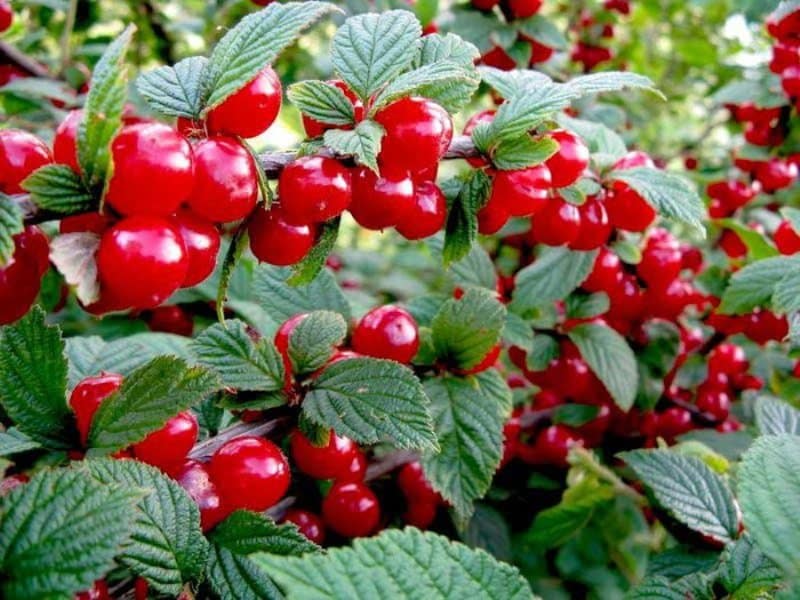
Plant the recommended crops at a distance of at least 3 meters.
Selection and preparation of planting material
When buying, pay attention to the following features:
- the root system should not be dry;
- the plant should not be damaged;
- height of about 1.5 meters;
- for a faster start of fruiting, a biennial plant is acquired.
Before planting, the root system is soaked in water for at least two hours.
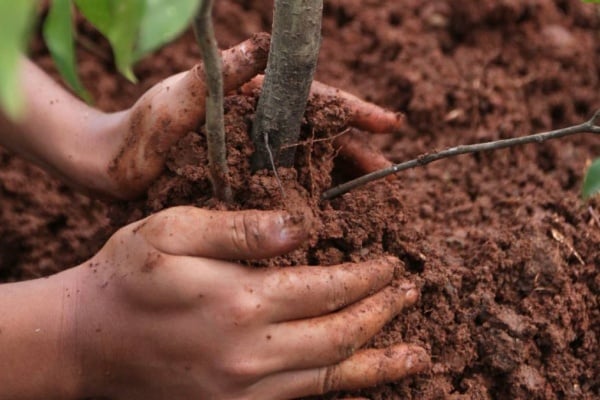
Planting stages
A hole is dug in the fall. Size 60 x 60 centimeters. A stake is driven into the center, which will support the plant. The earth is mixed with humus in equal proportions and the seedling is covered. The soil is compacted. The planting is poured with 30 liters of water. The circle around the trunk is mulched with humus.
Care
The plant is undemanding to care. Follow simple recommendations.
Watering
Watering is carried out during a drought.

Top dressing
Fertilize periodically. Use:
- peat;
- humus;
- wood ash.
They are brought in at the time of digging 3 times per season.The plant is not covered for the winter. Rodents do not touch the cherry bark, so there is no need to take additional protective measures.
Pruning
Cut off dried and damaged branches. The parts growing inside the plant must be removed. Shoots growing near the root are also cut off.
Diseases and pests
During the existence of the variety, pests have not been identified. Diseases are rarely affected.
